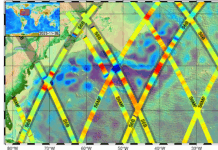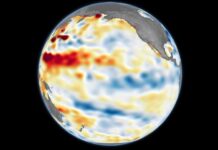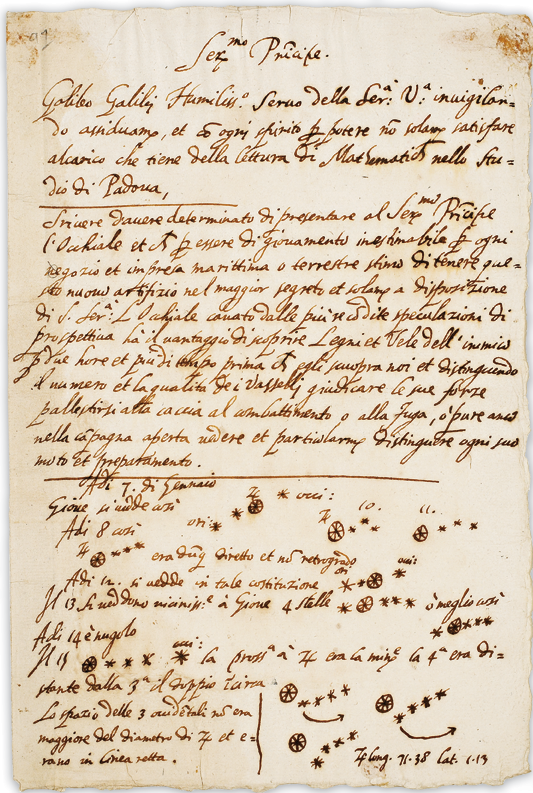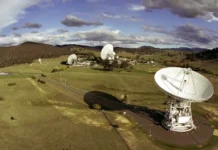On January 7, 1610, Italian astronomer Galileo Galilei made a groundbreaking observation that would forever change our understanding of the cosmos. Using his newly enhanced telescope, which had a 20-power magnification, Galileo turned his gaze toward the planet Jupiter. Through his observations, he noticed three distinct points of light near the giant planet. Initially, he assumed these were distant stars. However, as he continued his observations over the following nights, he realized that these points of light exhibited unusual movement that did not align with the behavior of stars. They stayed close to Jupiter but shifted their positions relative to each other. A few days later, on January 15, he identified a fourth point of light, showing similar unusual behavior. This led Galileo to conclude that he had discovered four moons orbiting Jupiter, providing strong support for the Copernican theory, which posited that not all celestial bodies revolve around the Earth.
In March 1610, Galileo shared his groundbreaking discoveries with the world in a publication titled "Siderius Nuncius," translated as "The Starry Messenger." He detailed his observations of Jupiter’s satellites and other celestial phenomena. As the discoverer, Galileo had the privilege of naming these moons. He initially proposed naming them after his patrons, the Medicis, and for a significant part of the seventeenth century, these celestial bodies were known as the Medicean Stars. However, in his personal notes, Galileo referred to them by Roman numerals I, II, III, and IV, based on their distance from Jupiter. Today, these moons are universally recognized as the Galilean satellites, paying homage to their discoverer.
In 1614, the German astronomer Johannes Kepler suggested a different naming convention for these moons, proposing names derived from mythological figures associated with Jupiter: Io, Europa, Ganymede, and Callisto. However, this suggestion did not gain widespread acceptance for over two centuries. It wasn’t until later that the scientific community embraced these mythological names. The discovery of additional satellites around Jupiter did not occur until 1892, when American astronomer E.E. Barnard discovered Jupiter’s fifth moon, Amalthea. Unlike the Galilean moons, Amalthea is much smaller and orbits closer to Jupiter than Io. This discovery marked the last time a moon in the solar system was identified through visual observation alone, as subsequent discoveries relied on photographic and digital imaging techniques. As of today, astronomers have identified 95 moons orbiting Jupiter, a testament to the planet’s gravitational influence and the advancements in astronomical technology.
Each of the Galilean satellites presents unique and fascinating features. Io is known for its active volcanoes, Callisto is heavily cratered, and Ganymede possesses a magnetic field. However, among these moons, Europa has captured the most attention from scientists due to the intriguing possibility that it might harbor conditions suitable for life. In the 1970s, NASA’s Pioneer 10 and 11 spacecraft, followed by Voyager 1 and 2, conducted flybys of Jupiter, capturing increasingly detailed images of these large moons, including Europa. These images revealed Europa’s remarkably smooth surface, the smoothest of any object in the solar system, suggesting a relatively young crust. Additionally, its bright surface indicates a high level of reflectivity. These observations led scientists to hypothesize that Europa is covered by an icy crust floating atop a subsurface salty ocean. They further theorized that tidal heating, caused by Jupiter’s immense gravitational pull, causes the surface ice to undergo cycles of melting and freezing.
Further insights came from NASA’s Galileo spacecraft, which orbited Jupiter from 1995 to 2003 and conducted 11 close encounters with Europa. The spacecraft’s observations revealed long linear features on Europa’s surface, indicating potential tidal or tectonic activity. Additionally, reddish-brown material along the fissures and in patches across the surface might contain salts and sulfur compounds, possibly transported from beneath the crust and altered by radiation. Observations from the Hubble Space Telescope and re-analysis of Galileo images suggested the presence of plumes emanating from beneath Europa’s crust, supporting the hypothesis of a subsurface ocean. While the exact composition of these plumes remains unknown, they may provide critical clues about Europa’s potential to support life.
Looking to the future, robotic exploration of Europa promises to answer some of the lingering questions about this intriguing moon. NASA’s Europa Clipper mission is set to launch in October 2024, embarking on a 5.5-year journey to Jupiter. Upon arriving in 2030, the spacecraft will enter orbit around the gas giant and conduct 49 flybys of Europa over a four-year mission. Managed by the Jet Propulsion Laboratory in Pasadena, California, and the Applied Physics Laboratory at Johns Hopkins University in Baltimore, Maryland, Europa Clipper will carry nine advanced instruments, including imaging systems and radar, to gain a deeper understanding of Europa’s icy crust and underlying structure. The data collected by Europa Clipper will complement findings from the European Space Agency’s JUICE (Jupiter Icy Moon Explorer) spacecraft. Launched in April 2023, JUICE is expected to enter orbit around Jupiter in 2031 and then around Ganymede in 2034. The spacecraft will also conduct studies of Europa that will complement Europa Clipper’s mission.
Together, these spacecraft endeavors are poised to significantly enhance our understanding of Europa and perhaps uncover new mysteries about this enigmatic moon. The potential discovery of conditions conducive to life on Europa would be a monumental scientific achievement, reshaping our understanding of the possibilities for life beyond Earth.
The exploration of Jupiter’s moons, particularly Europa, continues to captivate scientists and the public alike. As technological advancements propel our ability to study these distant worlds, the potential for groundbreaking discoveries remains vast. The legacy of Galileo Galilei’s observations over 400 years ago laid the foundation for our ongoing exploration of the cosmos, inspiring generations of astronomers to look beyond our planet and seek answers to age-old questions about the universe and our place within it.
For more details on the moons of Jupiter and ongoing missions, you can visit NASA’s official page: NASA Jupiter Moons.
For more Information, Refer to this article.


































